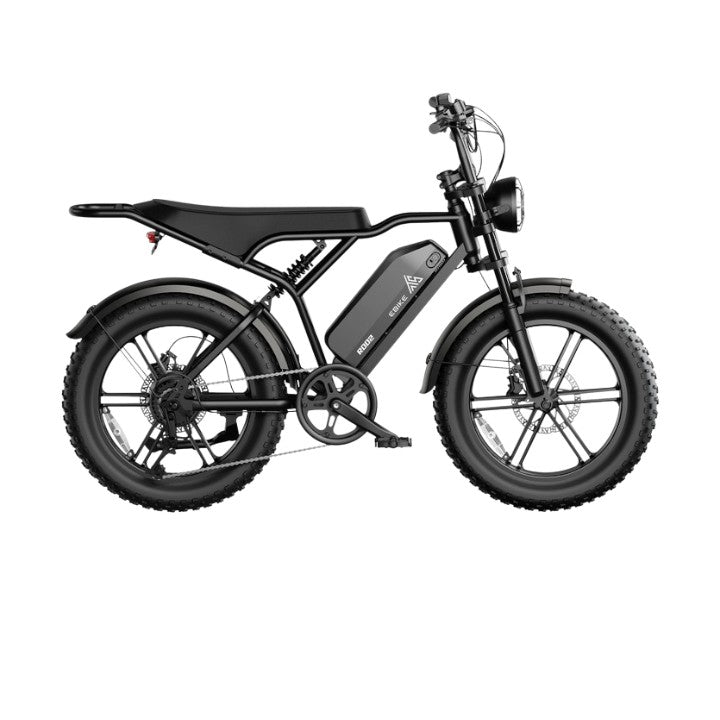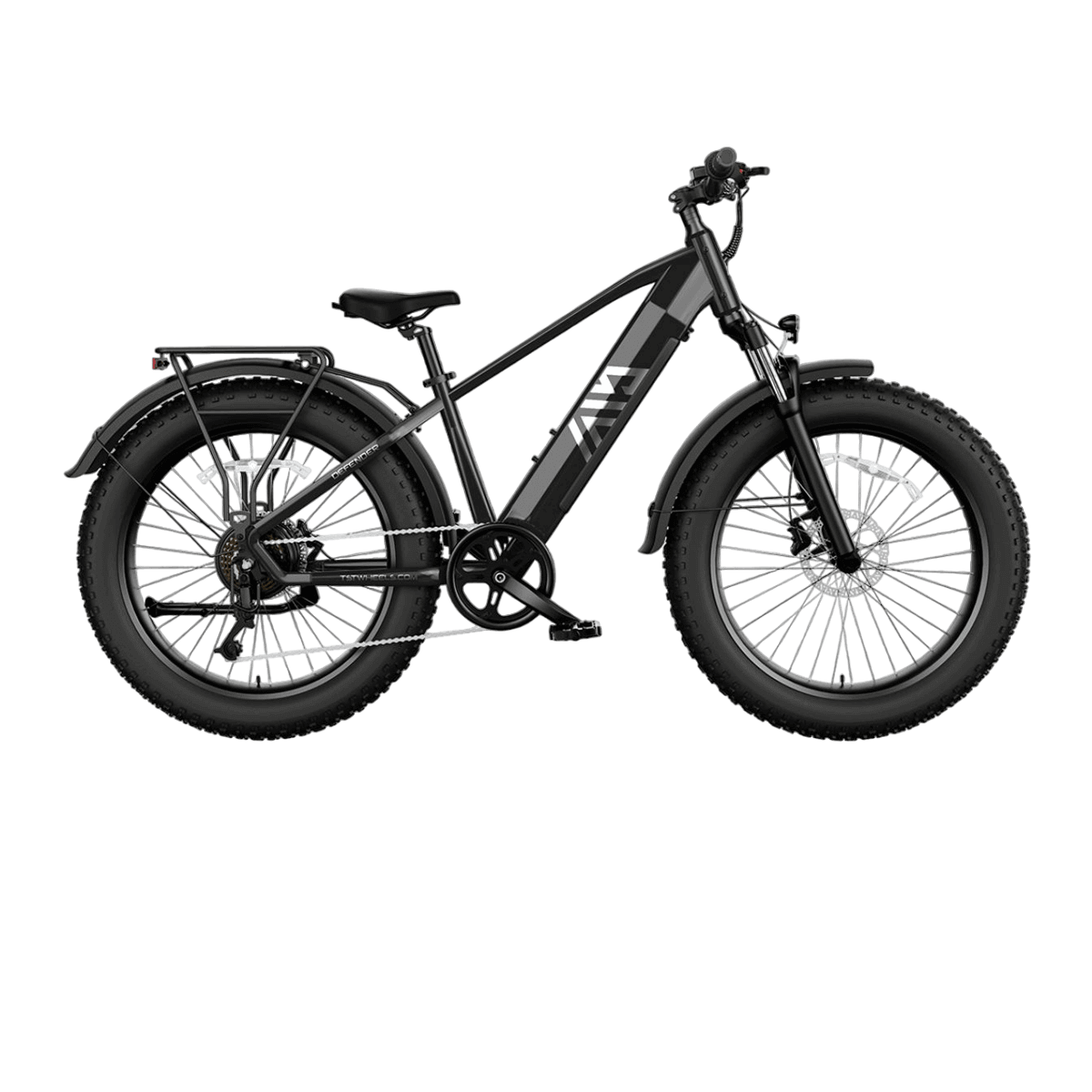Electric bikes work by combining human pedaling with motorized assistance, primarily through two systems: pedal-assist and throttle control. Pedal-assist provides power only when you pedal, offering a natural cycling experience and extended battery life, while throttle control lets you accelerate without pedaling, giving instant power on demand. Understanding these systems helps riders choose the best e-bike for their needs.
What Is Pedal-Assist and How Does It Function?
Pedal-assist, also known as pedelec, uses sensors to detect pedaling activity and modulates motor power accordingly. Cadence sensors detect when you pedal, while torque sensors measure how hard you pedal, allowing the motor to provide proportional assistance. This system encourages active riding, improves fitness, and optimizes battery efficiency by delivering power only when needed.
How Does Throttle Control Work on Electric Bikes?
Throttle control operates like a motorcycle throttle, allowing riders to engage the motor by twisting a grip or pressing a lever on the handlebar. This sends a signal to the motor controller to deliver power from the battery to the motor, propelling the bike without pedaling. Throttle mode offers immediate acceleration, ideal for quick starts or when riders want to minimize physical effort.
Chart: Comparison of Pedal-Assist and Throttle Control
| Feature | Pedal-Assist | Throttle Control |
|---|---|---|
| Motor Activation | Only when pedaling | Anytime via throttle |
| Rider Effort | Required | Optional |
| Battery Efficiency | Higher, extends range | Lower, drains battery faster |
| Riding Experience | Natural, bike-like | Scooter-like, instant power |
| Control Precision | Adjustable assistance levels | Continuous power control |
| Fitness Benefits | Promotes exercise | Minimal physical effort |
Which System Offers Better Control and Safety?
Pedal-assist provides smoother, more predictable acceleration since power delivery corresponds to pedaling effort, reducing the risk of sudden speed changes. Throttle control can cause abrupt acceleration, which may be harder to manage, especially for new riders. Many modern e-bikes combine both systems, allowing riders to switch modes based on conditions and preferences.
Why Does Pedal-Assist Typically Provide Longer Battery Range?
Because the motor supplements rather than replaces pedaling, pedal-assist systems draw less power from the battery, conserving energy and extending ride distance. Throttle mode demands continuous motor power, leading to faster battery depletion. Efficient use of pedal-assist levels and proper gearing further optimize battery life.
How Do These Systems Affect Riding Experience and Fitness?
Pedal-assist encourages active participation, improving cardiovascular health, muscle strength, and endurance. It offers a more engaging ride that feels like traditional cycling with a boost. Throttle control reduces physical exertion, suitable for riders with mobility issues or those seeking convenience, but it offers fewer fitness benefits.
Which TST EBike Models Feature Pedal-Assist and Throttle Systems?
| Model | Wheel Size | Terrain Suitability | Control Systems |
|---|---|---|---|
| TST EBike 26-inch Model | 26-inch | Rough terrains like snow and sand | Pedal-assist with thumb throttle |
| TST EBike 27-inch Model | 27-inch | Daily commuting and mountain biking | Pedal-assist with twist throttle |
Both models combine pedal-assist and throttle control, providing versatile riding options for fitness, commuting, and adventure.
Buying Tips for Choosing Between Pedal-Assist and Throttle E-Bikes
- Assess Riding Style: Choose pedal-assist for fitness and longer rides; throttle for convenience and quick starts.
- Consider Terrain: Pedal-assist suits varied terrain; throttle is best for flat or urban areas.
- Evaluate Battery Needs: Pedal-assist offers better range; throttle may require more frequent charging.
- Test Both Systems: Many e-bikes allow switching; try both to find your preference.
- Check Model Features: Look for TST EBike models that integrate both systems for flexibility.
Electric bikes have transformed the way we approach cycling, blending the benefits of exercise with the convenience of electric power. A common question many riders have is: How do electric bikes work? Specifically, do you need to pedal to get the most out of your ride? The answer varies based on the type of e-bike and your riding preferences.
In this article, we will explore the mechanics behind electric bikes, focusing on the differences between pedal-assist and throttle-controlled systems.
Types of Electric Bikes: How it All Works
Electric bikes come in various types, primarily categorized by their assistance modes: pedal-assist (pedelec), throttle-controlled, or a combination of both. Pedal-assist e-bikes provide motor support when you pedal, enhancing your effort, while throttle-controlled e-bikes allow you to engage the motor without pedaling, offering a scooter-like experience. Some models offer both modes for versatility.
To understand whether pedaling is required to ride an e-bike, three major categories of electric bikes need to be recognized. They include:
- Pedal-Assist Electric Bicycles
- Throttle-Controlled Electric Bicycles
- Hybrid Electric Bicycles
All these types of bicycles promise different levels of pedaling, and also the ride experience will be different. Now, let's consider each category in detail.
- Pedal-Assist Electric Bikes: Enjoy Effortless Riding
The most popular form of e-bikes is the pedal-assist e-bikes, more commonly referred to as "pedelecs." As the name suggests, these bikes must be pedaled to activate the motor. The electric motor provides variable degrees of assist in a manner that enables the rider to have an easier ride without necessarily losing the feel of the cycle. This system creates a feeling of having supercharged legs whereby one can ride uphill or against wind with much less effort.
With a pedal-assist bike, a slight pedaling starts an action detected by sensors, which, in turn, will activate the motor to assist. Often, the amount of assistance will have multiple modes, such as low, medium, and high assistance. With the help of motors in pedal-assist e-bikes, they can go as fast as 20-28 mph dependent upon regional regulations.
Quite simply, yes, you do have to pedal on pedal-assist e-bikes, but the motor makes things a great deal less physically taxing than a normal bicycle. The style of bike is perfect for people who would appreciate the healthy elements of pedaling but just need that little extra kick.
- Throttle-Controlled Electric Bikes: Effortless Acceleration at Your Fingertips
Throttle-controlled e-bikes are normally compared to electric scooters since there is no need for a rider to pedal the bike forward. Bicycles within this category normally possess a throttle-one on a handlebar-that, when switched on, switches the motor of the bike on without pedaling. Thus, it provides full "twist-and-go" or "push-button" motorized travel.
With this, the only thing a rider needs to do is twist the throttle, and on goes the motor, and he can coast along without pedaling. These bikes allow riders to switch back and forth between the throttle mode and pedaling. This allows several ranges of flexibility on the ride.
Speed is completely controlled by throttle and similar top-end speed as pedal assist models depending on how powerful the motor is and what the local regulations are.
In throttle-controlled e-bikes, pedaling is unnecessary. However, due to the proper utilization of battery capacity or an acute urge to gain physical exercise, many riders continue pedaling.
- Hybrid Electric Bikes: Flexibility for Every Rider
Hybrid e-bikes combine features of both pedal-assist and throttle-controlled systems, hence offering the best of both worlds. These bikes let the rider pedal by getting the assistance of the motor or switch to throttle when they want to get a break from pedaling.
Depending on the selected mode, pedal-assist or throttle, one can seamlessly switch between these during rides. These bikes provide flexibility for different riding conditions and preferences.
Pedaling in pedal-assist mode is a battery-conserving way to operate the device. Throttle mode allows ease when you need it most. Operating hybrid e-bikes, on the other hand, makes pedaling optional. Riders can, therefore, use their discretion and decide on pedaling either by how much energy they have or the type of terrain they use.
Why Pedaling Matters: Benefits of Staying Active
- Battery Conservation
E-bikes have a limited battery range of about 20 to 100 miles, depending on the model of the e-bike, the terrain, and the use of the motors. Even light pedaling can be conducive in saving battery life. The motor works less in the pedal-assist mode, and hence you go farther on one charge. Using an e-bike strictly in throttle mode will cut your general range because you're completely relying on the battery.
- Exercise
Also, maybe the main reason that many people go to e-bikes is because of a fitness premise. Where electric power makes rides easier, it also helps in burning calories, hence contributing to cardiovascular health. The pedal-assist e-bike provides an excellent way to keep active without the intense effort which comes along with regular biking.
- More Control
Pedaling gives you greater control over speed and mobility. In such instances, you could pedal up steep hills by combining your pedaling with the power of the motor for a much more effective ride.
- Legal Requirements
There are some regions that have specific regulations about how much motor power can be used without pedaling. In some cases, pedal-assist bicycles could be less restrictively governed than throttle-only bikes, making them more flexible to use and in compliance with all the legal requirements in those areas. Learn more about California E-Bike Laws.
Conquering Hills: The Power of Pedaling and Motor Assistance
Electric bikes equipped with pedal-assist and robust motors excel at hill climbing. The combined effort of pedaling and motor assistance reduces strain, making steep inclines more manageable. Mid-drive motors with higher torque are particularly effective for tackling challenging terrains.
One of the most common questions that e-bike riders seem to have regarding an electric-powered bicycle is how they fare on hills. For many, this mere capability of going up steep inclines is a primary reason for choosing an ebike in the first place.
For the most part, it is a good idea to pedal when negotiating uphill, even on a throttle-controlled or hybrid bike. This is because steep hills quickly deplete your battery if you happen to be completely on the motor. You help the motor propel the bike upwards by pedaling, which relieves some effort in moving uphill without losing too much of the important battery power.
Hybrid models, such as TST ebikes, perform exemplarily on hilly terrain due to a mix of both pedal assist and throttle functionalities, affording the rider a choice in handling any slope with efficiency.
How to Choose the Best E-Bike for Yourself
Selecting the right e-bike involves considering factors like intended use (commuting, off-road, leisure), terrain, desired assistance level, and budget. Test riding different models can help determine comfort and suitability. Additionally, ensure the e-bike fits your body size and meets local regulations.
Whether you choose to go with a pedaling or non-pedaling e-bike depends a lot on your riding habits, terrain, and, of course, personal preference. Each type of e-bike offers something different:
The pedal-assistance e-bikes let the rider stay active, save battery power, and yet have the advantage of a motor. It will be ideal for riders who want an easy and comfortable ride and perhaps not pedal, particularly on short commutes or casual rides. These hybrid e-bikes offer the best of both worlds for the riders who need versatility and can choose between pedal assist or throttle modes depending on the riding situation at any given moment.
Get an affordable type of ebike for your versatile needs from the TST ebike brand, with top-tier hybrid ebikes to keep up with different riding needs.
Conclusion: Finding Your Perfect Ride with TST Ebikes
No matter what type of e-bike you prefer—whether it’s for exercise, easy commuting, or long leisurely rides—understanding how electric bikes work can help you make the best decision. If you’re looking for a versatile option, consider exploring models like hybrid e-bikes that offer both pedal-assist and throttle control.
Ready to find your next ride? Discover how TST Ebikes can elevate your riding experience with their innovative designs and top-tier performance.












Leave a comment
All comments are moderated before being published.
This site is protected by hCaptcha and the hCaptcha Privacy Policy and Terms of Service apply.